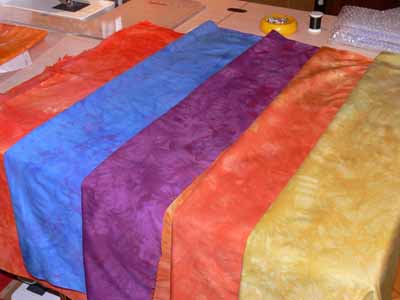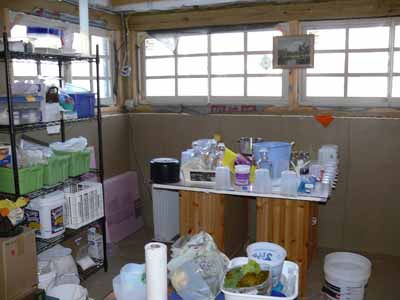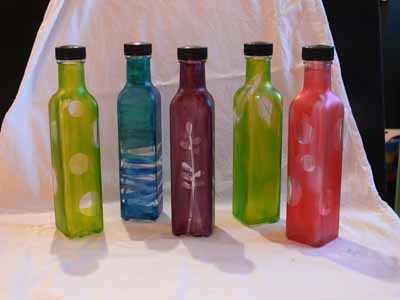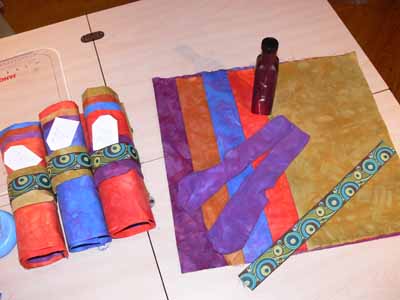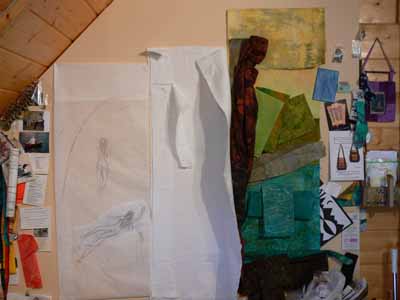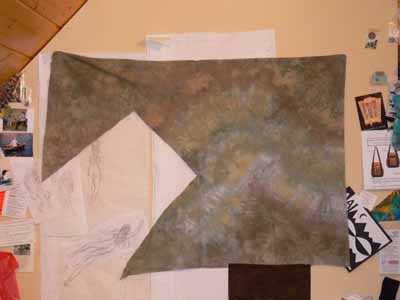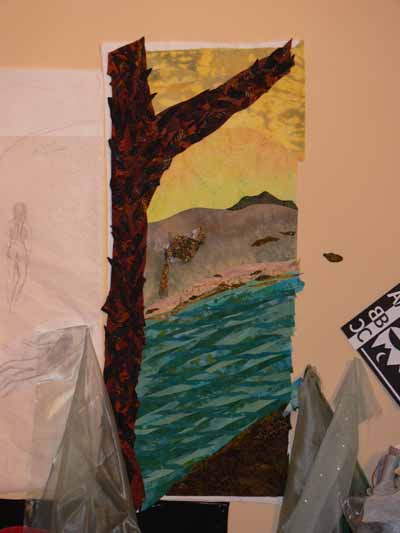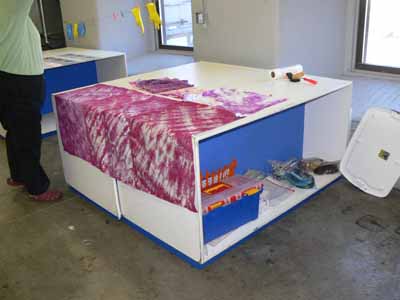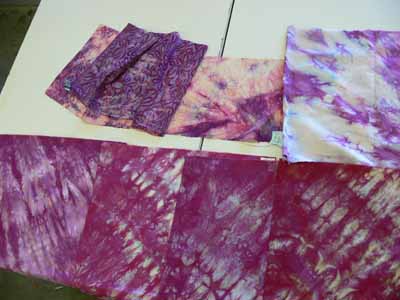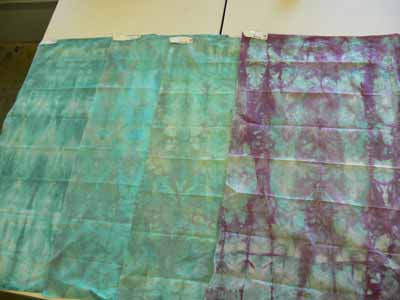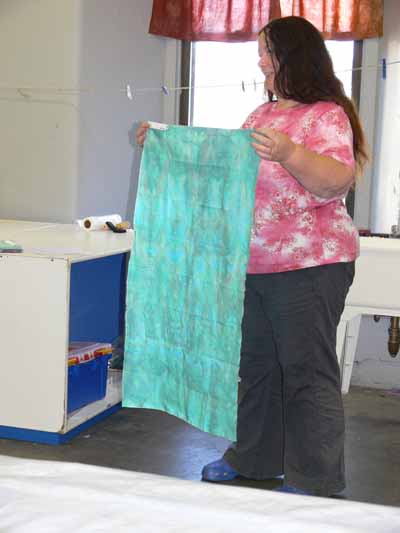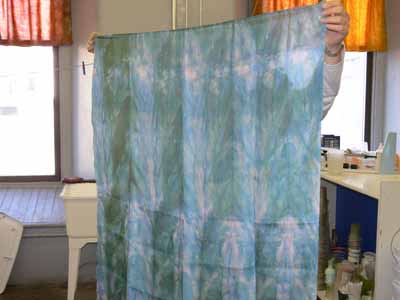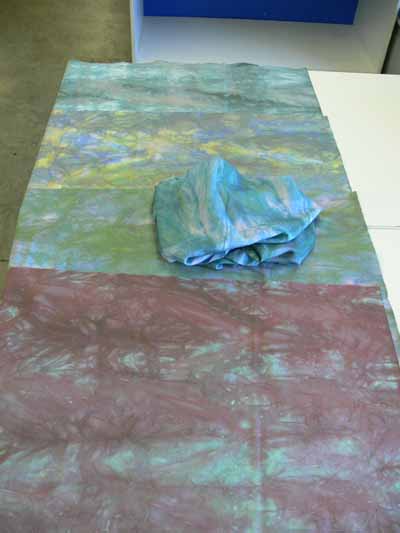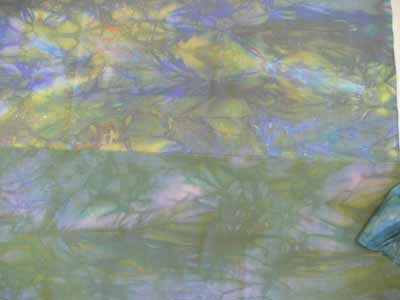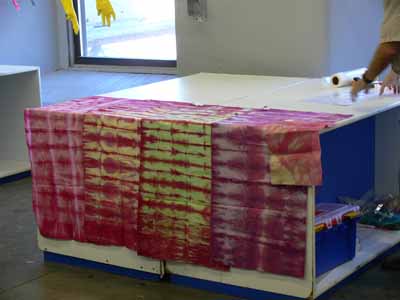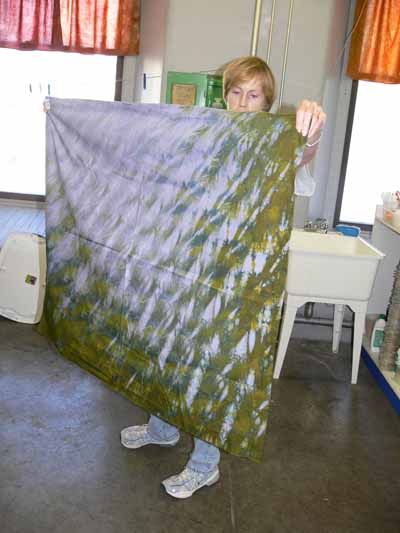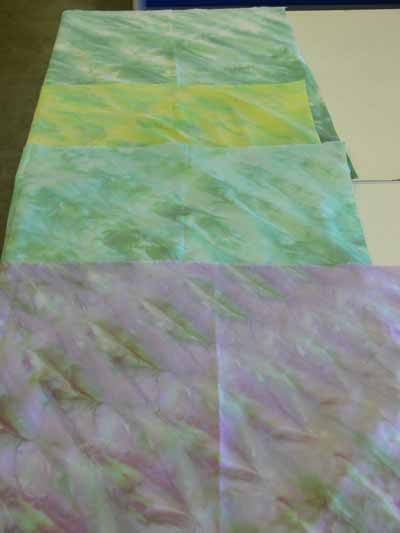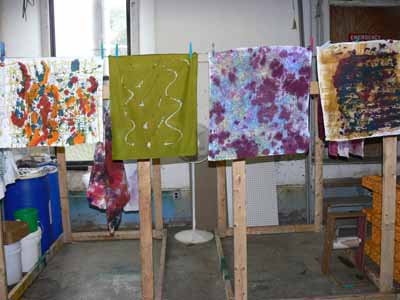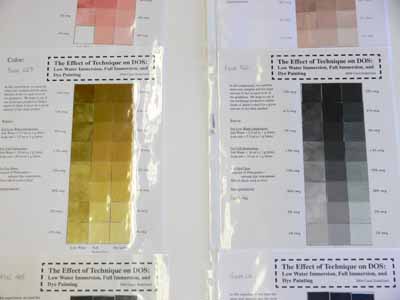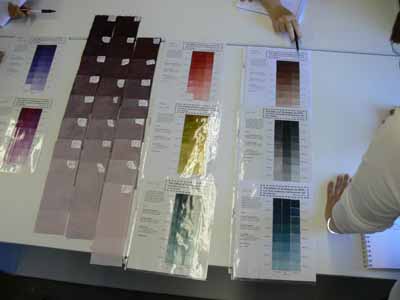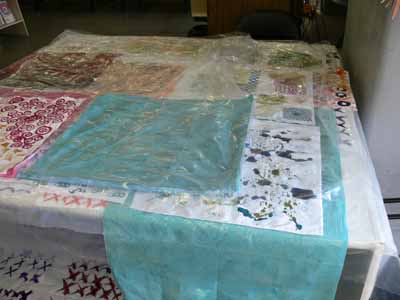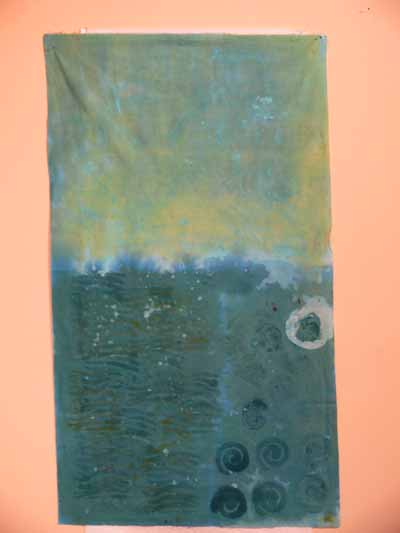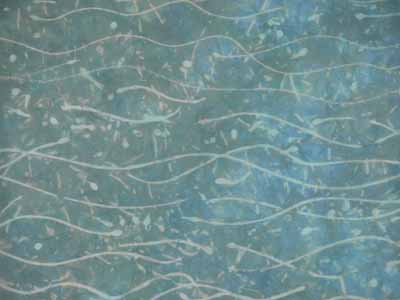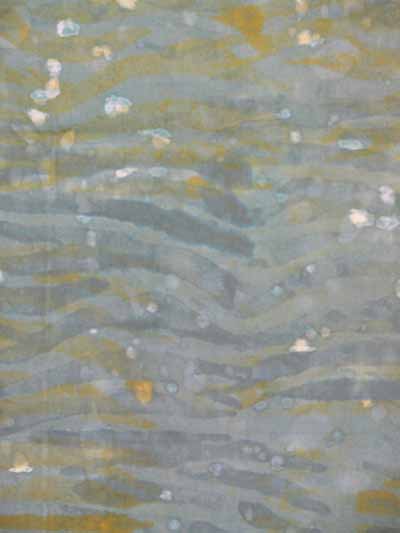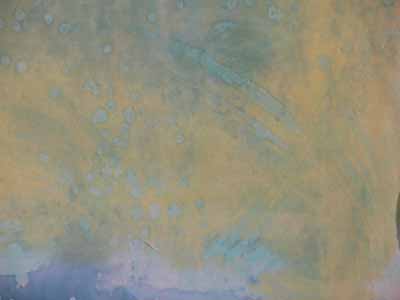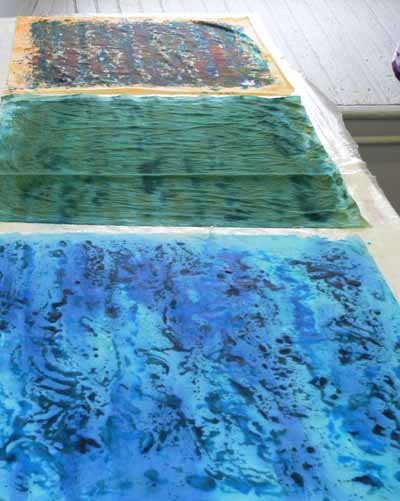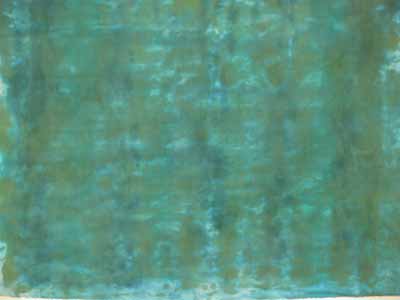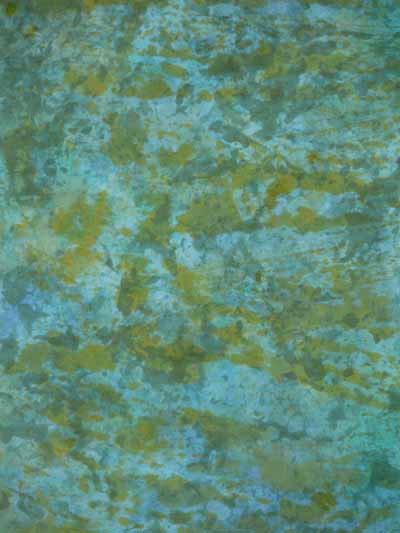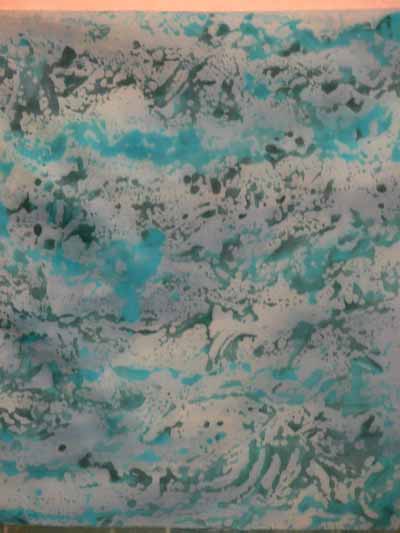Dyeing, December 2007
Monday, December 31st, 2007Gifts for the Frayed Edges were home-made and recycled this year… the best kind! I had found some gorgeous ribbon at Rock Paper Scissors, a store in Wiscasset. Deborah always loved to stop at Smitten, owned by the same person, and I had never been despite the fact that I drive through Wiscasset at least twice a month on my way to and from Frayed Edges meetings. So one time, on the way home, I finally stopped. And bought YARDS of this gorgeous ribbon, with the idea of making a gift for my fellow Frayeds. As Christmas approached, I thought…do they really need ANOTHER bag with this ribbon on it? Why not let them make something they like/want instead? That led to the decision to dye fabric.
I got home from Mom’s in California on Dec. 11th. Over the next couple of days I dyed about 16 yards of fabric! I did two yards each of five colors (one for each of the other Frayed Edges and one for Marie. Each person received a half yard of “their” color plus a fat quarter yard of the other four colors. While I was at it, I decided to also dye some wonderful PFD (prepared for dyeing) fabrics Marie gave me for Christmas last year: silk organdy, gauze, lawn… plus some cheesecloth and also some silks. Oh MY!
I moved my “table” (two old cabinets plus styrofoam insulation and a 4×4 piece of scratched up shower board) over by the basement windows. A vast improvement to being on the other side of the basement. Still no sink downstairs (I had a plumber give an estimate….$1200 not including sink, counter, faucet…to install….not gonna happen), so am hauling water, but at least it is space and I don’t need to worry about dye or soda ash splattering on the cement walls and floor. The shelving on the left is new and wonderful! All my dyes, auxiliaries and pots and beakers and whatnot in ONE place!
Batching and just rinsed fabrics look so wonderful (too see larger, click on the photo):


Then…. I took some raspberry syrup jars and painted them with glass paint. I used Pebeo Vitrea 160 (available here at Dick Blick) . I picked colors and a motif for each person….green for Marie, sea blues for Kathy, purple for Deborah, green for Kate, and deep coral for Hannah. The purple one for Deborah, for example, has the stalk with buds on it which she has used so often in her work, Kath’s has waves for the sea. I used contact paper cut into shapes and stuck on the bottles, then painted, allowed paint to dry. Paint is supposed to cure 24 hours (I cut it a little close on a few! as usual ran late on time) before baking. You put the glass in a cold oven, turn on the temp to 325. When the oven reaches 325 you “bake” for 40 minutes, then allow to cool inside the oven. It worked! Wouldn’t these look great in a window? I think we need to have more raspberry syrup on our waffles so I can make some for us!
Finally, I wrapped everything up…. the bottle got wrapped with a pair of hand-dyed socks, which got wrapped with the 1 1/2 yards of hand-dyed , which got rolled with that ribbon from Rock Paper Scissors!
In the interest of having good materials to work with for my art quilting, I dyed a lot of fabric… I’ll have more to share over the next week or two.

